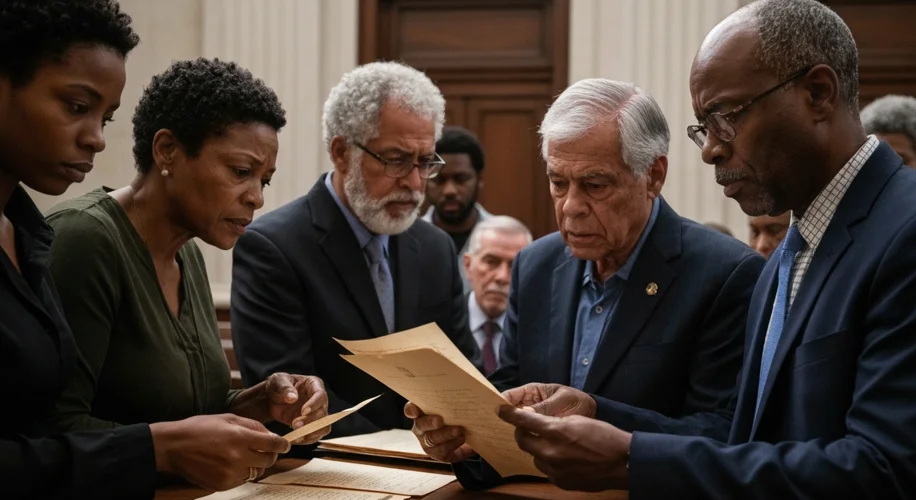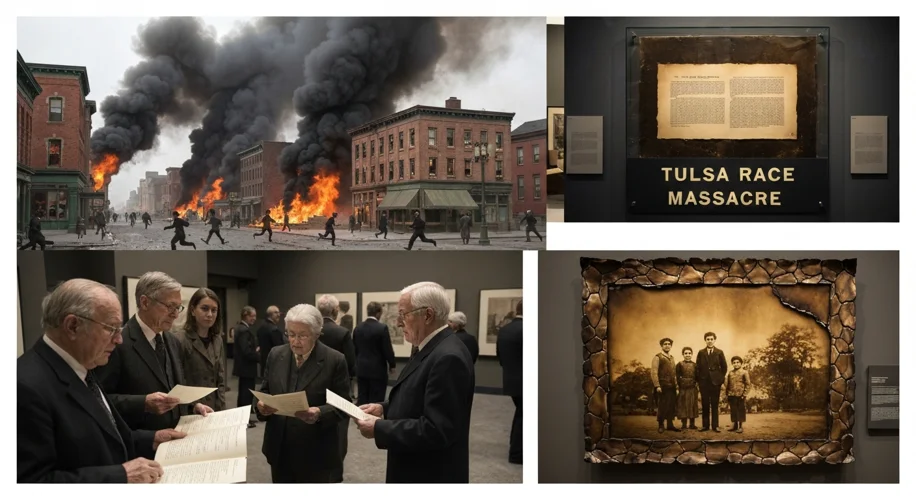A Black Utopia Burned: The Tulsa Race Massacre of 1921
The year is 1921. America is a nation basking in the glow of victory, yet shadowed by the deep, festering wounds of racial injustice. In Tulsa, Oklahoma, a vibrant and prosperous Black community known as “Black Wall Street” thrived. Greenwood, its heart, was a testament to Black ingenuity, resilience, and self-sufficiency, boasting thriving businesses, a bustling nightlife, and a palpable sense of pride.
But this Black utopia was a glaring anomaly in a deeply segregated South, and its very existence was perceived as a threat by some white citizens. Tensions had been simmering, fueled by racial animosity and amplified by the national climate of racial strife following World War I.
The Spark and the Inferno
The incident that ignited the blaze occurred on May 30, 1921. A young Black man named Dick Rowland was accused of assaulting a white teenage elevator operator named Sarah Page. The details of the alleged assault remain murky, and Rowland was arrested. However, the following day, rumors of a potential lynching began to spread like wildfire through Tulsa. A group of armed Black men, concerned for Rowland’s safety and determined to prevent another atrocity, gathered at the courthouse. They were met by an armed white mob. A confrontation ensued, shots were fired, and the unthinkable began.

What followed was not a riot, but a massacre. Over the next two days, a coordinated and brutal attack by thousands of white rioters, some deputized by city officials, descended upon Greenwood. Homes were looted, businesses were systematically destroyed, and Black residents were targeted with a chilling efficiency. Reports describe planes dropping incendiary devices on the thriving community, an early and horrific use of aerial bombardment against civilians in America.
Eyewitness Accounts and Devastating Loss
Survivors recounted harrowing tales of terror and loss. Families were torn apart, lives were shattered, and the vibrant pulse of Greenwood was extinguished. The death toll remains a subject of debate, with estimates ranging from dozens to as many as 300 Black men, women, and children. Thousands were left homeless, their livelihoods annihilated. The economic devastation was immense, with an estimated $1.75 million (equivalent to over $30 million today) in damages.
Yet, in the aftermath, the story of the Tulsa Race Massacre was largely suppressed. Official reports downplayed the scale of the violence and the complicity of authorities, casting blame on the Black community. For decades, the massacre was erased from history books, a shameful secret buried deep within the American narrative.
The Long Road to Reckoning
It wasn’t until the late 20th century that efforts to unearth this forgotten chapter gained momentum. Survivors and their descendants, along with dedicated historians and activists, worked tirelessly to bring the truth to light. The establishment of the Tulsa Race Riot Commission in 1997 was a pivotal moment, leading to a comprehensive report that acknowledged the massacre and the complicity of city and state officials.

Today, the Tulsa Race Massacre serves as a stark reminder of the devastating consequences of racial hatred and systemic injustice. It is a critical juncture in American history that demands our attention, our remembrance, and our commitment to ensuring such atrocities are never repeated. The echoes of Greenwood, though once silenced, now resonate, urging us to confront the uncomfortable truths of our past and build a more just and equitable future.
The Persistent Silence and the Call for Justice
The aftermath of the massacre was marked by a calculated campaign of silence. Insurance companies denied claims, and legal avenues for seeking justice were largely blocked. Many survivors were intimidated into silence, and the narrative of the events was twisted to portray the Black community as the instigators of the violence. Greenwood, once a beacon of Black prosperity, was slowly rebuilt, but the scars of the massacre ran deep, both physically and psychologically.

The efforts to bring about accountability and reparations for the descendants of the massacre victims have been long and arduous. While some legal victories and public acknowledgments have been achieved, the full measure of justice remains elusive for many. The story of Tulsa is not just a historical event; it is a living legacy that continues to shape conversations about racial equity, historical memory, and the ongoing struggle for civil rights in America.

